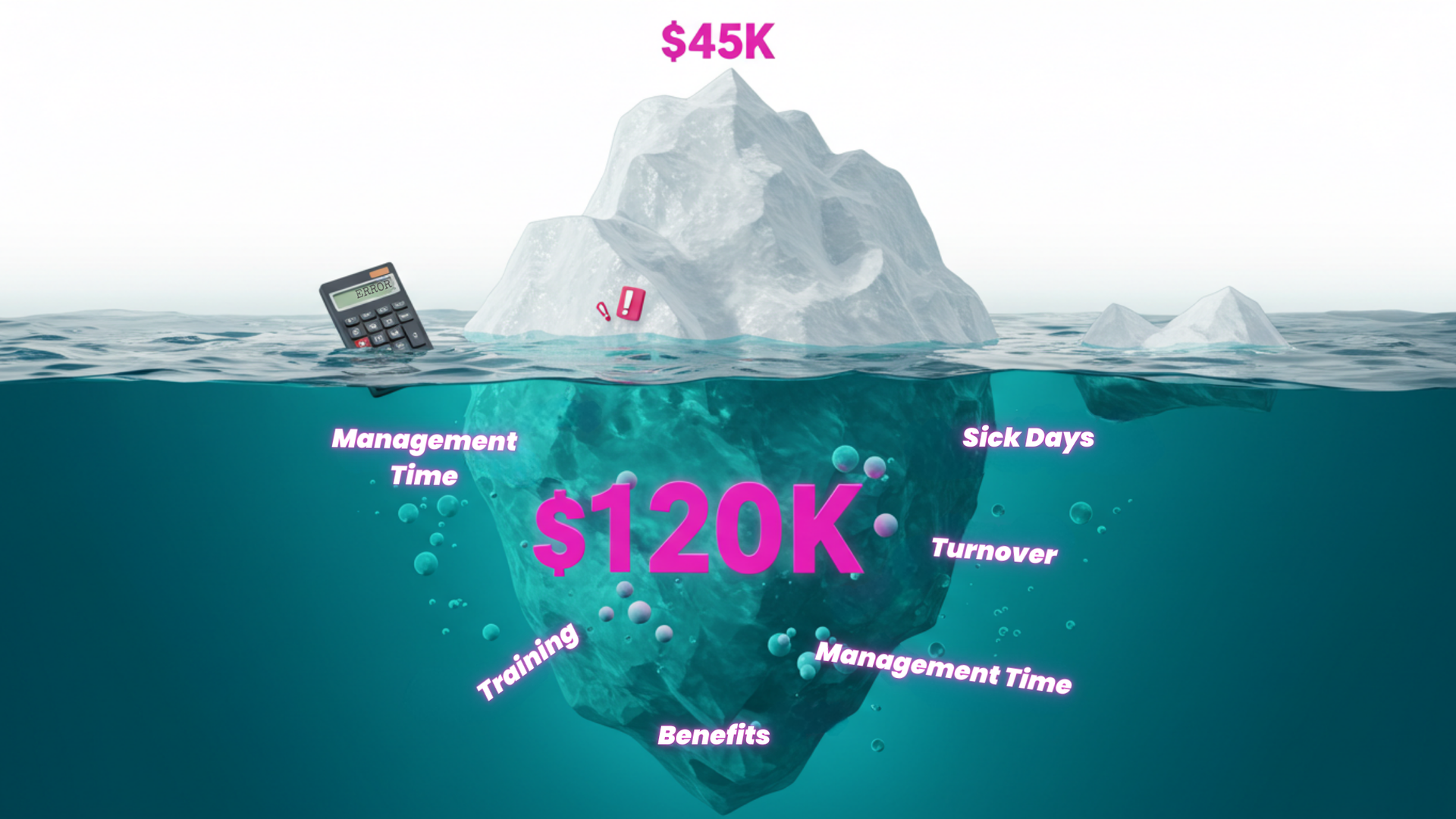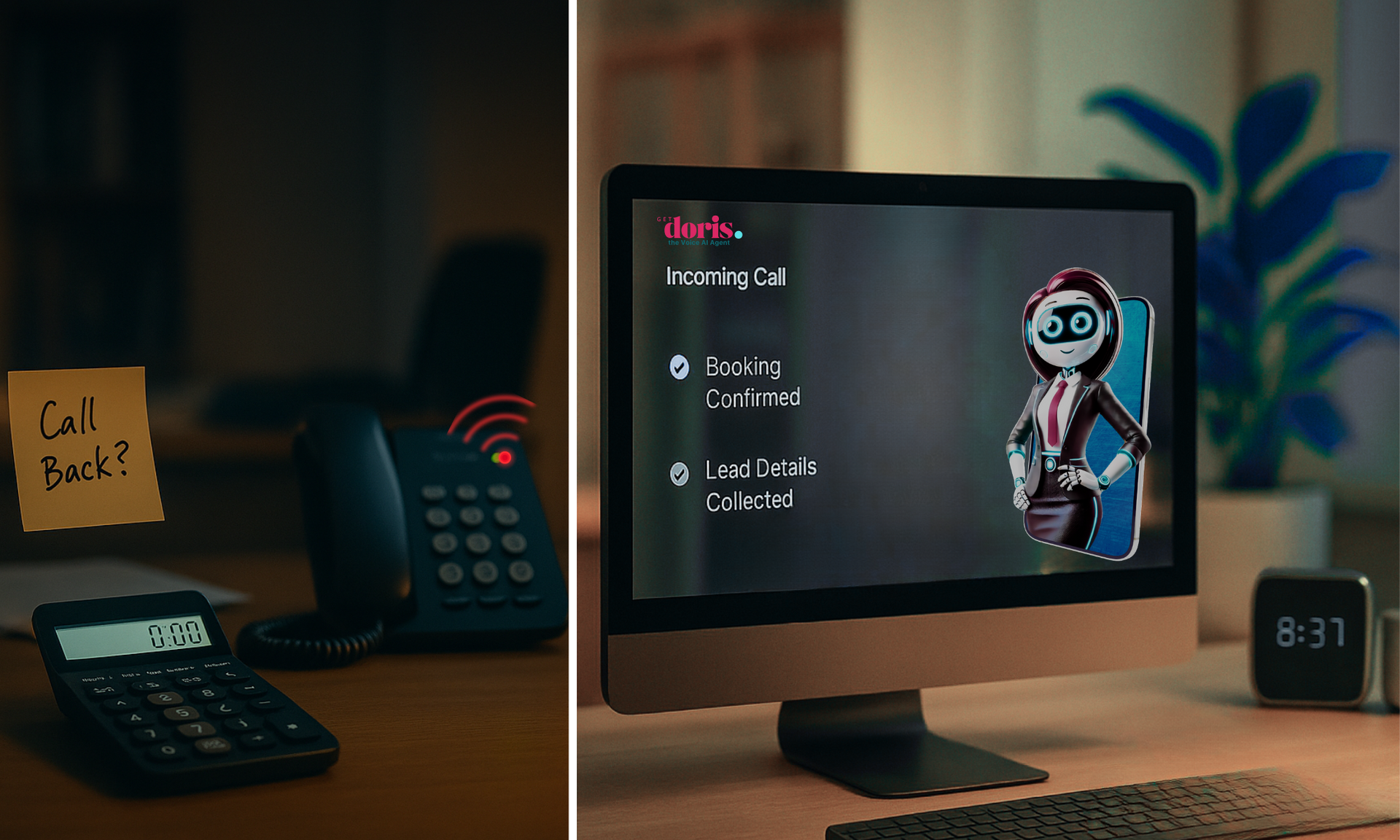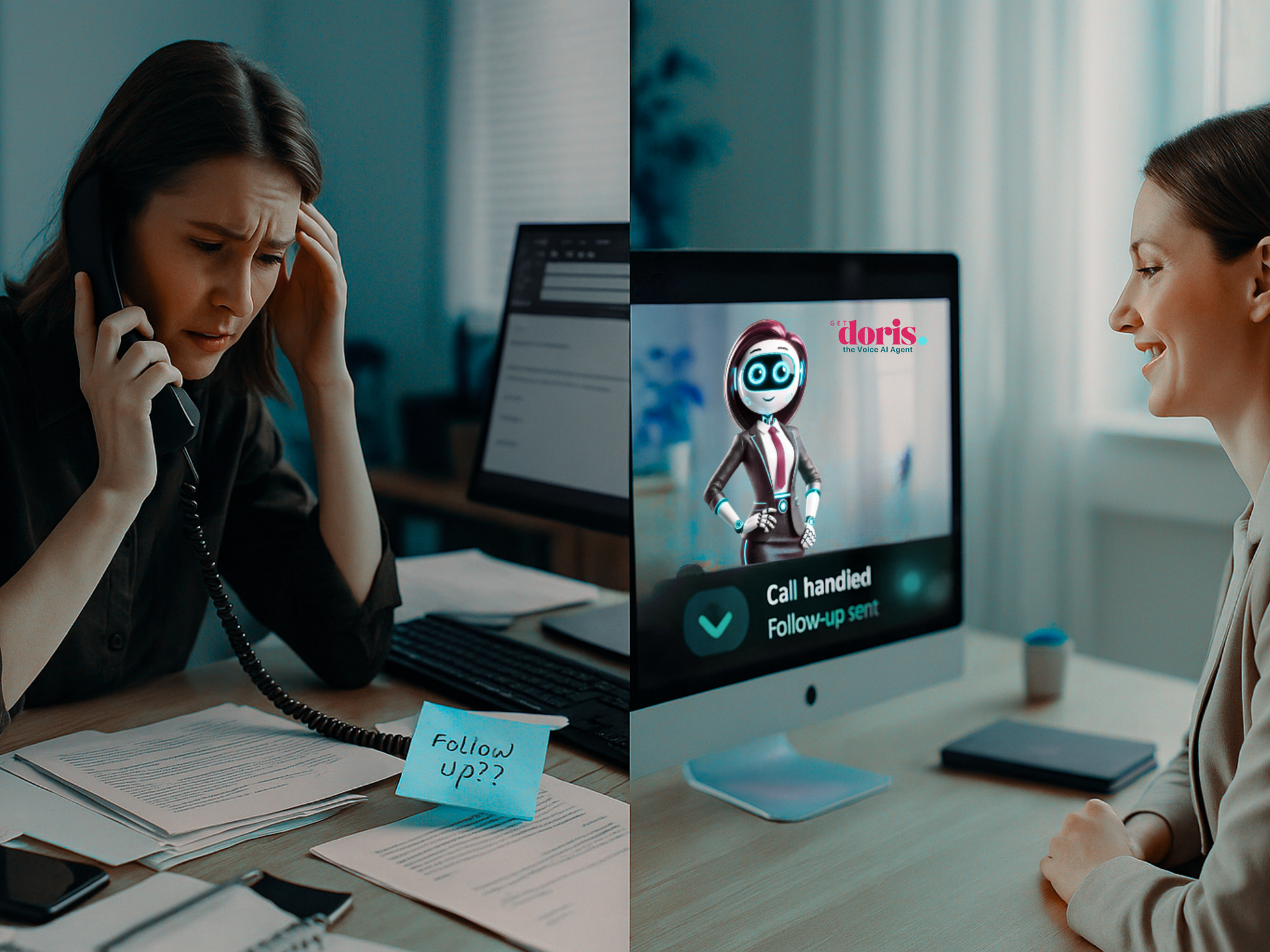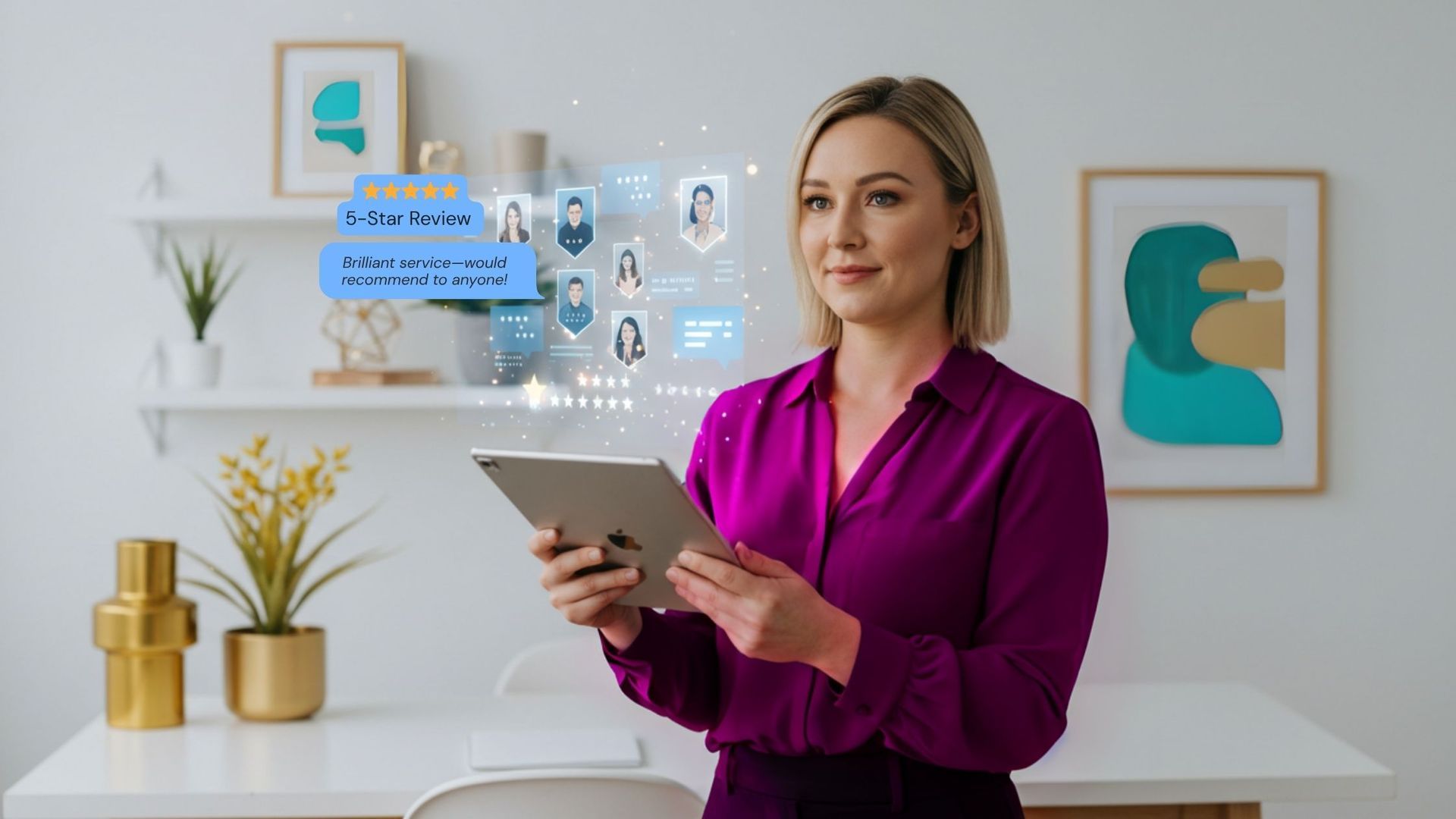The Client Communication Crisis: Why Growth Is Choking Your Professional Practice (And How to Fix It)
You started your practice to help people—to solve their problems, provide expert guidance, and build meaningful client relationships.
But somewhere along the way, your practice became consumed by missed calls, delayed responses, and endless phone tag with potential clients who may never convert.
The more your practice grows, the less time you spend on actual client work. That's the growth paradox. Success brings more enquiries—but also more communication overhead, more missed opportunities, and exponentially more chances for potential clients to slip through the cracks.
The global professional services market continues to expand, yet individual practices face mounting operational challenges. Research from the Legal Marketing Association shows that 67% of potential clients will contact multiple service providers when seeking professional help, making responsiveness a critical competitive factor.
In this comprehensive guide, we're examining:
- Why client communication presents unique challenges for growing practices
- The hidden costs of missed calls and delayed responses
- Proven strategies successful practices use to stay responsive
- How to scale communication without sacrificing personal service
Why Client Communication Is Harder Than It Looks
Managing client enquiries might seem straightforward: someone contacts your practice, you collect their details, assess their needs, and schedule a consultation if there's mutual fit.
In reality, professional service communication involves multiple complex layers:
The Multi-Channel Reality
Modern clients don't follow predictable communication patterns. They might:
- Call during business hours, then email additional questions
- Submit a web enquiry, then call immediately for clarification
- Start with a general question, then reveal urgent deadlines
- Provide incomplete information across multiple touchpoints
Each interaction creates potential for miscommunication, duplicate efforts, or lost context—especially problematic when client needs are time-sensitive.
Emotional and Urgency Factors
Professional service enquiries rarely come from calm, planned circumstances. Potential clients may be:
- Facing immediate deadlines or urgent situations
- Experiencing stress about their circumstances
- Dealing with financial or personal pressure
- Operating under time constraints that affect decision-making
This emotional context demands a balance between efficiency and empathy that few other industries require, while still maintaining professional boundaries and clear communication.
Information Complexity
Professional services involve sensitive information that clients often struggle to communicate clearly. Unlike retail or standard service businesses, professional practices must:
- Gather detailed background information during initial contact
- Assess whether the enquiry fits within their expertise
- Determine urgency and priority levels
- Maintain confidentiality from first contact
- Set appropriate expectations about processes and timelines
The Hidden Economics of Poor Communication
Ineffective client communication creates cascading costs that extend far beyond obvious time investment.
Revenue Leakage Through Missed Opportunities
With a high proportion of potential clients contacting multiple service providers, the practice that responds fastest and most professionally often wins the engagement.
Consider these revenue impact scenarios:
- Missed calls during business hours: If your practice handles 50 enquiries monthly and misses 20% due to busy lines or unavailable staff, that represents 10 potential clients lost monthly
- After-hours enquiries: Professional emergencies don't respect business hours. Practices without after-hours response capability miss significant revenue opportunities
- Delayed response times: Each day of delay in responding to enquiries increases the likelihood that prospects will engage competing firms
For a practice charging $150 per hour with average engagements worth $2,000, just 5 missed opportunities monthly represents $10,000 in lost revenue—or $120,000 annually.
Operational Inefficiency Costs
Manual communication processes create multiple efficiency drains:
Duplicated Effort: Information collected via phone often requires re-entry into client management systems, creating double-work and potential errors.
Incomplete Information Gathering: Without structured enquiry processes, critical details are frequently missed during initial conversations, requiring follow-up calls and extending decision timelines.
Resource Misallocation: Senior professionals spending time on routine enquiry handling represents significant opportunity cost—their expertise could generate higher value elsewhere.
Client Experience Impact
Poor communication systems affect long-term client relationships:
- First Impression Problems: Missed calls or delayed responses create negative initial experiences
- Trust Issues: Inconsistent communication patterns undermine professional credibility
- Referral Impact: Unsatisfied initial contacts are unlikely to refer others to your practice
Why Traditional Solutions Often Fall Short
Professional practices typically attempt to address communication challenges through several conventional approaches, each with inherent limitations:
Staff Expansion Approach
Adding administrative personnel seems logical but creates new challenges:
- Training Overhead: New staff require extensive training on practice procedures and client communication standards
- Coverage Gaps: Human staff cannot provide true 24/7 availability
- Scalability Limits: Labour costs increase directly with volume, making growth expensive
- Quality Consistency: Different staff members may handle enquiries differently, creating inconsistent client experiences
Basic Answering Services
Traditional answering services provide coverage but lack sophistication:
- Script Limitations: Generic scripts don't address practice-specific enquiries effectively
- No Integration: Messages require manual follow-up without automated workflows
- Limited Screening: Basic services can't assess enquiry quality or urgency appropriately
Simple Contact Forms
Basic online forms collect information but provide poor user experience:
- High Abandonment Rates: Complex forms intimidate potential clients
- No Immediate Response: Static forms cannot provide instant acknowledgment or guidance
- Limited Qualification: Forms cannot assess urgency or provide preliminary advice
Modern Communication Solutions That Work
Forward-thinking practices are implementing comprehensive communication strategies that address traditional limitations:
Intelligent 24/7 Response Systems
Successful practices ensure constant availability through smart automation:
- Immediate Acknowledgment: Automated responses confirm receipt and set clear expectations
- Intelligent Triage: Systems categorise enquiries by urgency and service area
- Professional Voice Integration: AI-powered phone systems handle calls with natural conversation
- Multi-Channel Coordination: Seamless integration across phone, email, and web enquiries
Conversational Enquiry Management
Rather than static forms, modern systems guide prospects through dynamic interactions:
- Contextual Follow-ups: Systems ask relevant questions based on previous responses
- Plain Language Guidance: Complex professional concepts explained in accessible terms
- Progressive Information Gathering: Details collected in logical sequences to reduce overwhelm
- Real-time Availability: Immediate scheduling based on practitioner calendars
Integrated Workflow Automation
Effective communication systems connect seamlessly with existing practice operations:
- Automatic Lead Capture: Enquiry information flows directly into client management systems
- Calendar Integration: Systems can schedule consultations based on availability and service requirements
- Follow-up Automation: Systematic nurturing of prospects who aren't ready to proceed immediately
- Performance Analytics: Tracking response times, conversion rates, and communication effectiveness
Implementation Strategies for Sustainable Growth
When evaluating communication improvements, consider these evidence-based factors:
Technology Integration Requirements
Successful communication systems must work with existing practice infrastructure:
- Client Management Integration: Seamless data flow between communication and record-keeping systems
- Financial System Coordination: Automatic setup for billing and payment processing
- Multi-Platform Communication: Unified messaging across phone, email, and web channels
Scalability Planning
Choose solutions that grow with your practice:
- Volume Flexibility: Systems should accommodate growth without proportional cost increases
- Service Area Expansion: Adaptability to new practice areas or geographic markets
- Team Integration: Solutions that work whether you're a solo practitioner or larger practice
Quality Maintenance
Ensure automation enhances rather than replaces personal service:
- Brand Consistency: Communication should reflect your practice's professional standards
- Escalation Protocols: Complex or sensitive enquiries should reach appropriate professionals quickly
- Personal Touch Preservation: Technology should facilitate, not replace, meaningful client relationships
The Strategic Imperative: Focus on Your Expertise
Professional services are experiencing unprecedented change. Client expectations are rising, competition is intensifying, and technology is reshaping service delivery across all industries.
Practices that continue managing basic communication manually are allocating precious resources to non-core activities. Every hour spent on routine enquiry handling is an hour not spent on client work, professional development, or practice growth.
The question isn't whether to improve communication processes—it's how quickly you can implement solutions that free your team to focus on what you do best.
Effective communication systems don't replace professional judgment; they enhance it by handling routine interactions efficiently and ensuring important enquiries reach the right professionals promptly.
Reclaiming Your Practice
Client communication will always require some personal involvement—professional services are fundamentally about relationships and expertise that technology cannot fully replace.
However, the routine, repetitive aspects of communication can be streamlined significantly, allowing your team to focus on what truly matters: providing excellent professional service and building strong client relationships.
The practices thriving in today's competitive environment are those that leverage technology strategically, maintaining the personal service clients expect while operating with the efficiency modern business demands.
You didn't start your practice to become a receptionist. You started it to help people—and with the right communication approach, that's exactly what you can get back to doing.

















